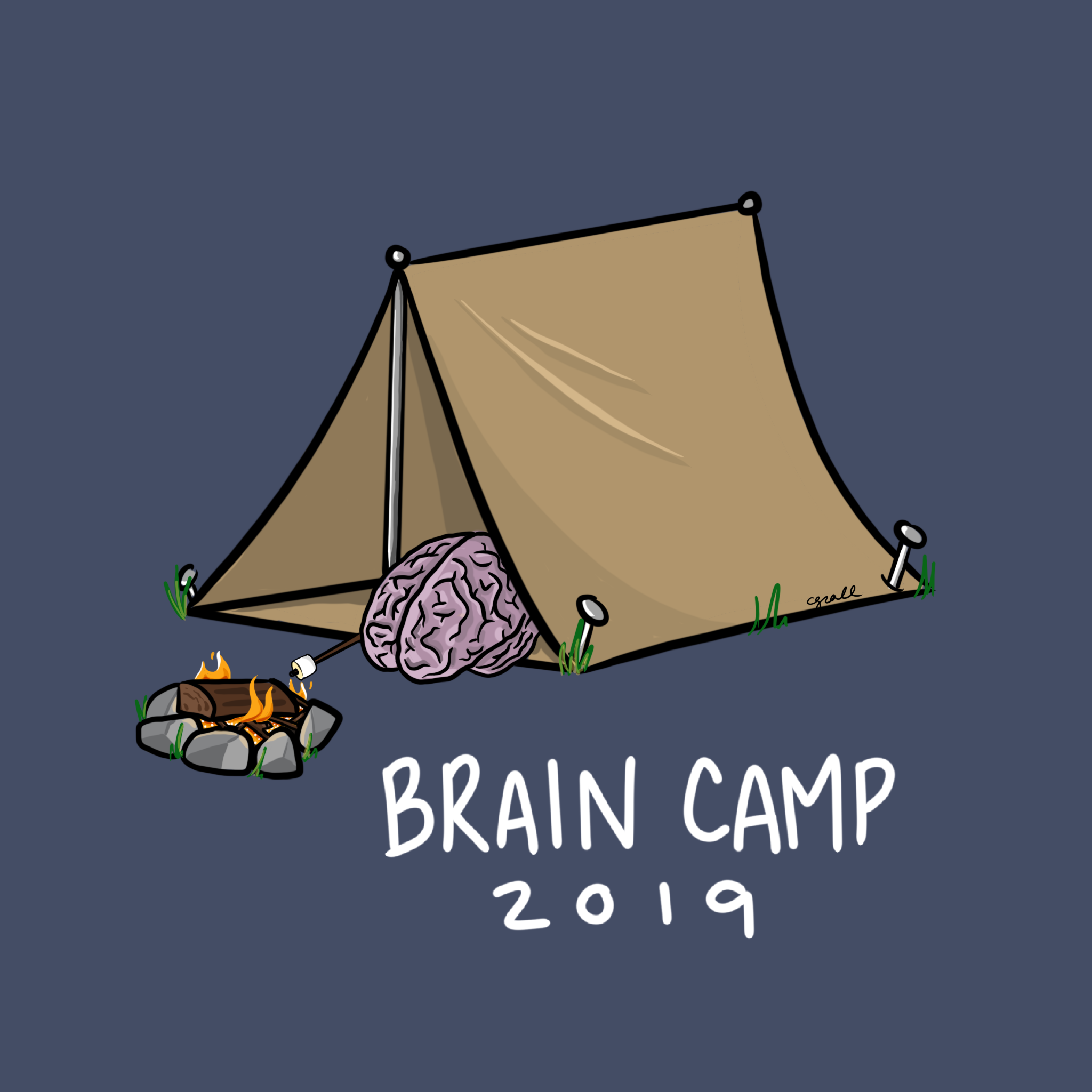Brain Camp recap: Kavli Summer Institute in Cognitive Neuroscience 2019

With the generous support from the Dartmouth Graduate Student Council (GSC), I was able to attend the 2019 Kavli Summer Institute in Cognitive Neuroscience (a.k.a. Brain Camp) hosted at University of California at Santa Barbara. The summer program lasted for two weeks with each week focusing on different themes. The first week was directed by Dani Bassett (U Penn) and Jörn Diedrichsen (U of Western Ontario) and focused on “Intersections Between Neural Representations and Network Models.” The second week was directed by Leah Somerville (Harvard U) and Luke Chang (Dartmouth College) and focused on the “Computational Social Neuroscience: Advances, Challenges, and New Directions.” Approximately 70 or so fellows attended the conference from around the world.
Amongst the numerous talks, the very first experience that stood out were the human neuroanatomy labs and the neuropathology video sessions led by Robert (Bob) Knight (UC Berkeley) and Robert (Bob) Rafal (U Delaware). I’ve been through multiple Neuroanatomy and Psychology classes but these duo put up a class that was far more informative and interesting than any other. Especially with their long careers in Neurology, the descriptions of the pathology really came to life while they showed videos of patients showing various symptom that they themselves tested to localize the neuroanatomical sites responsible for the problems. In addition to the neuropathology lectures, talks on representations generally hovered around the notion of studying visual representations in the brain by comparing them to layers in the deep convolutional neural networks using encoding models, decoding models, and representational similarity analyses. Talks with network models discussed the application of network and topology theories on analyzing functional and anatomical connectivity of brain regions and their insights into the organization and functioning of the brain.
The second week, notable talks included those from Read Montague (Virginia Tech), Daniela Schiller (Mt Sinai), Steve Chang (Yale U), Molly Crocket (Yale), and Matthew Apps (U Oxford). I particularly enjoyed the moral neuroscience talks that tried to model how we make decisions about whether to help others. For example, Molly Crockett shared with us a paradigm in which participants had to decide between two options which had different ratios between an electric shock and a monetary gain. The basic finding was that most people would require a greater ratio or shock to dollars than for the self ($2/shock for self but $4/shock for other). These behavior were accompanied by neural activity such that the striatum activity increased more for selfish choices while the lateral prefrontal activity encoded the conflict of a moral choice such that it was most activated when inflicting pain yielded minimal profit. Moreover, the connectivity between the lateral prefrontal cortex and the dorsolateral striatum was modulated by whether the individual was making selfish or kind decisions. The correlation between the two regions increased when participants were making harmful or nonsocial choices. I thought that research like these could be developed further in the future by looking at more naturalistic moral decisions which would provide a more ecologically valid and comprehensive model of moral decisions.
In addition to the academic lectures, I engaged in multiple conversations about inclusivity, diversity, and creating a safe and sustainable work environment in academia. Learning about policies implemented in other institutions such as having a graduate student in hiring committees, mandatory secondary advisors, graduate student unions, and health & dental insurances seemed to give a sense that there are modular burgeoning movements in the right direction although we are far from a global change. We talked about how misconducts in both academic and in advisor-advisee relations should be considered in grant and faculty tenure decisions such that faculty who exploit graduate students for their private gains or personal careers should be exposed and criticized. As a personal endeavor to contribute to this movement, I began working on a website through which graduate students both current and former can write about and review their advisors. Although institutional level implementations would be most effective and ideal, it is unclear when, if ever, such measures would be implemented especially when there are no real benefits for the institutions. Therefore, I think that the notion of being socially evaluated could be a beginning to start motivating faculty to improve how they are not just as scientists but also as good advisors.
Overall, I had a really exciting time at the Brain Camp 2019. I was not only able to get to know the fellows and the faculty at the academic level but also at a personal level by hanging out with them and talking about both science and not science related topics on the beach. I feel like I have made great connections and colleagues that will last throughout my career. I am once again deeply thankful to the Dartmouth GSC Student Professional Development Support Fund to help me attend the institute.
conference social affect neuroscience